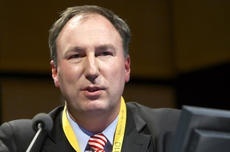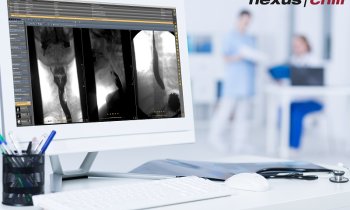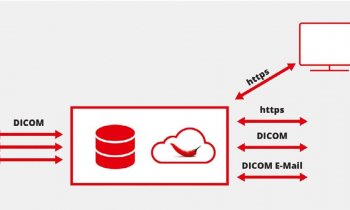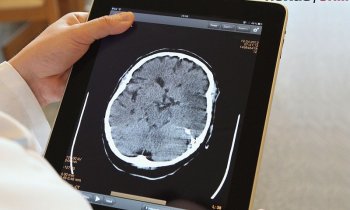Radiology and Management
From image provider to service provider - the role of radiology in the strategic planning of a medical center
Professor Jörg F. Debatin, MD MBA, Medical Director and Chairman of the Board of University Hospital Hamburg-Eppendorf (UKE) opened the session with his presentation “The role of radiology in the strategic planning of medical centres”. He discussed possibilities to effectively explore the hidden potential of diagnostic radiology services.

What role does radiology actually play in a medical center, Professor Debatin? “Imaging is a huge innovation driver: It shifts to less invasive modalities, with less and less radiation exposure. The integration of function and morphology in imaging as well as the visualisation of nano-molecular processes sparks entirely new way of thinking about imaging. Rather than insisting on standardised processes we are returning to individualised healthcare which is based on the biology of the disease and less on the skills of the physician.” Radiology, Debatin said, has four main faces: the advisor on diagnostic strategy, the presenter of imaging findings for subsequent therapy, the image interpreter and the technical innovator. Since it is the primary role of medical imaging to deliver accurate interpretations and extensive know-how in order to identify the correct diagnostic strategy, Debatin considers the establishment of centers of competence with a multidisciplinary approach a crucial task.
Debatin is convinced that only sub-specialisations – neuroradiology, cardiovascular, chest, abdominal, etc. – can guarantee high quality. “You need at least 40 radiologists to cover all sections,” he said. In view of this fact, teleradiology is the only way to organize sub-specialized image interpretation, be it be as a single center or a network. Diagnostic radiology will be handled in a “global reading room”.
“The competence to define the diagnostic strategy has to be found locally,” he continued. “But sub-specialty interpretation is something that can be performed locally or remote, individually or as part of a network. If you opt for the local strategy the advantage of course is that you stay independent. But it is also expensive and you will never be able to cover all fields of radiology service.” The fact that today image data can be transferred electronically not only provides the irreplaceable advantage of quasi real-time remote readings but also many new ways to establish networks that can be helpful for many other purposes as well. If a radiology centre can offer diagnostic services to a small hospital that cannot provide the complete range of radiology services, a relationship based on trust is established which also impacts on other referral flows. Additionally, the centre will benefit from referrals of complex cases that the small hospital cannot handle but which the radiology centre needs for research purposes.”
And what is the role of the radiologist himself in a medical center? The most important task for radiologists is to redefine their own professional self-image, Debatin pointed out. Radiologists are secondary service providers and that is how they should understand their role. “The radiologist is no longer only a diagnostic pathway advisor and image interpreter. He is also an image presenter: to his peers as well as to his patients.”
For Debatin radiology is a key to survival for any medical center. “Therefore think big when you think about radiology – that will secure everybody’s jobs,” was Debatin’s concluding take-home message.
Prof. Debatin is not only a renowned lecturer, but also a recognised expert and strategist for hospital management. For four years, Debatin was Professor and Chairman of the Dept. of Diagnostic and Interventional Radiology at the University Hospital Essen. Since 2003 he has been Professor and Medical Director as well as Chief Executive Officer at the University Medical Centre Hamburg-Eppendorf (UKE). Under his leadership, UKE has developed several innovative approaches to increase medical quality, scientific performance and profitability.
12.04.2010











